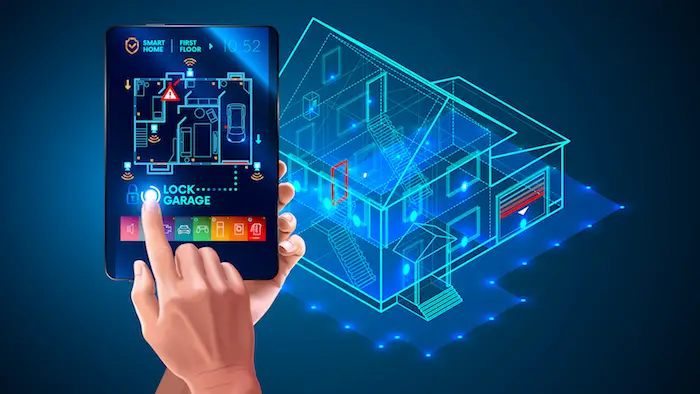A “smart” home is outfitted with internet-connected devices and appliances that can be controlled and automated via a central system or smartphone software.
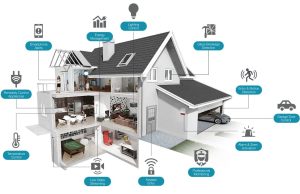
It was unveiled to the world in 2011 and marked the beginning of what futurists and commentators. Finally, in 2014, the Amazon Echo made its debut, ushering in the “Voice First” revolution and solidifying the idea of the smart house in our minds. Since then, a flood of smart home goods has entered the market. As a result, thousands of everyday objects have been intelligently or smartly enhanced.
However, the “smart” home is not as smart as we believe for several reasons, despite these gadgets’ convenience and potential energy savings. Devices linked to the internet are susceptible to cyberattacks, and the risk of a security breach rises as more devices are added to a home network. Hackers can access confidential data or take over devices, endangering the security and privacy of homeowners. Below are things you should know.
Read Also- How Social Media is Changing our behavior and Mental Health
Drawbacks of the Smart Home
Below is a list of the drawbacks of the Smart Home.
Interoperability Issues
Although various smart home gadgets are available, not all work together. It might be confusing and stressful for homeowners to use multiple apps to manage their devices.
Dependence on the Internet
The correct operation of smart home appliances depends on an internet connection. The proper process of smart home appliances depends on an internet connection. These gadgets might not function as intended if there is a power outage or interruption in internet service, leaving residents without control over their appliances and gadgets.
Cost
Equipping a whole house with smart home technology can add up fast because these devices can be pricey. Some devices additionally charge ongoing subscription costs to maintain access to specific features or services.
Complexity
Setup and configuration of smart home devices can be time-consuming and complicated, necessitating technical expertise and troubleshooting abilities. This may be a hurdle to adoption for those who are not tech-savvy or require more time to learn how to use these devices.
4 Insightful Arguments Against the Smart Home Trend
Many Smart home products appear excellent at first look. Still, there are problems and drawbacks that you should be aware of—issues that may make you lose interest in the idea entirely. You can call your house smart once you’ve gathered enough of these to improve your daily life. (some prefer to call it home automation). Though the tendency towards smart homes is expanding, should you follow it? Many of these goods appear excellent and helpful at first glance.
Still, there are problems and drawbacks that you should be aware of, problems that may make you lose interest in the idea entirely.
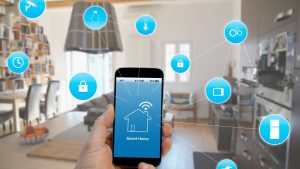
1. Smart Products Are Not Always Convenient
Making your life simpler is the final aim of the smart home revolution and technology in general. The ultimate goal of smart homes is to enable worry-free living at home without the need for cooking, making coffee, doing chores, or wasting energy.
There will be automation throughout. We are, however, a long way from that idyllic future. Consider lighting as an illustration. It is feasible to create a smart lighting system that turns on when you enter a room and off when you leave, albeit several initial setups are required. Learning curves are a significant issue for smart goods, partly because each is distinctively different. For example, setting up a smart door lock or lawn sprinkler requires the same knowledge as operating your Nest thermostat (UK).
Each smart home gadget typically comes with a unique app that you must use to operate that device. So if you purchase ten separate devices, you will have ten apps to manage. To further aggravate the situation, most smart gadgets need better user interfaces. One of the things that aided to the failure of smart TVs is that if a product is difficult to use or doesn’t feel nice in your hands, you’re not likely to use it, and it will gather dust.
2. Sometimes, the convenience isn’t worth it
Some intelligent products do fulfill their utility promises. One such example is the Nest thermostat, which not only makes it easier to manage the climate in your house but also enables you to save money in the process.
Despite this, many smart goods are marginally superior to their “dumb” counterparts. While I wouldn’t go far as to call smart goods gimmicks or anything of the sort, most smart products are overpriced relative to what they offer.
The truth is that many smart products fail when they attempt to “do it all.” When you own a phone, tablet, and computer that can peruse the internet more effectively, why spend hundreds more on a “smart” refrigerator that can do it? When a “dumb” smoke alarm is just as effective, do you need a “smart” one?
If you shop wisely, a smart house won’t ruin your budget. However, it would help if you exercise extreme caution when evaluating the value proposition of a smart gadget. The added advantages are only sometimes worthwhile.
3. Real Security and Privacy Issues
For many people, this could be the stick that breaks the camel’s back. For example, how would you feel if the Amazon Echo’s microphone allowed the government to overhear your private conversations? Or what if they had access to the webcam on your smart TV?
Or even worse, how about hackers? When it comes to internet-connected gadgets, these worries are widespread, but what’s unsettling is that they go beyond simple paranoia. They have real-world foundations. Any device that is connected to the public internet has the potential to be hacked or subject to eavesdropping.
More specific risks are apparent than others. For example, installing security cameras all over your house may make you feel safer and more secure. Still, if hackers can access those cameras, they can determine precisely when you are and are not at home, giving them the ideal opportunity to commit a burglary.
4. Smart Products Are Frequently Ignored
When you see turn on my smart TV, you occasionally see a message that reads, “App X will be discontinued on…” This tells you that some business needs to care more about supporting their smart TV app.
Years ago, The smart TV came with thousands of applications. It now only has a few dozen. Since the smart home market is still in its infancy, things are changing quickly. As a result, some applications and gadgets will unavoidably fall by the wayside. On Kickstarter, we’ve seen dozens of innovative product concepts come and go, most of which were never realized. And many of the smart gadgets that were released eventually became obsolete. (The Staples Connect Hub and the Amazon Echo Dot [UK] come to mind.)
Obsolescence is a significant issue in the tech sector, but it is significantly worse in the context of smart homes. Although these businesses still need to engage in planned obsolescence, you never know when they might close down their servers, which is always a significant risk.
For instance, one advantage of purchasing a smart security camera is that the video is immediately uploaded to cloud storage offered by the manufacturer. If it is discontinued, you miss out on one of that service’s key features and might even lose all the stored videos. By only using reputable smart home brands, you can reduce this risk. However, it still presents a significant enough threat that you should consider.
The four different types of smart homes
The so-called “smart home” of today isn’t really what we at THRIVE would consider “smart,” as we’ve observed that the general meaning of “smart,” in device-related terms, includes a spectrum of technological capabilities.
However, to be genuinely intelligent, a home must be in sync with the user’s current emotional needs. We’re seeing four distinct archetypes emerge in the market for smart homes, each with varying degrees of technological and emotional maturity.
Below is a list of them;
Automators
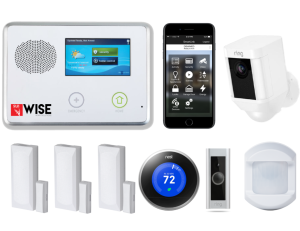
Automators automate your daily routines using programmable devices, making your home more innovative, energy-efficient, and secure. These enable you to specify how, when, and why the device should respond; you establish the schedule, and the rest takes care of itself. For example, think about automated lighting set to turn on and off at specific times each day when picturing these discrete products that function independently of one another over a wireless network in your house.
Connectors

By connecting devices through a network connected to the internet, connectors build smart home networks that improve user autonomy and quality of life while streamlining interactions with home technology. As a result, many innovative home ecosystems exist, including Amazon Alexa, Apple HomeKit, Google Assistant, Hive, and SmartThings.
Read Also: How Tech Companies are Invading our Privacy
Intelligizers

Intelligizers add intelligence to the home ecosystem by customizing the behavior of your goods and services with technology that reads your behavior and then adapts it to suit it. It uses data to simplify and automate routine chores autonomously while tailoring them to your behavior through sensors and algorithms.
Nest is the model for an intelligence company with a specific vision for building “thoughtful” homes.
Empathizers
Unlike others, empathizers build adaptable, peaceful, intelligent houses capable of sensing, thinking, and acting. They are interested in how everyday objects and surfaces respond to our presence and needs without actively manipulating them to comprehend human emotions.
Empathizers work under the assumption that services provided in the home will be so commonplace, obvious, and unobtrusive as to become expected in daily life. Until now, the smart home setting has not contributed to advances in empathy; instead, the automobile has. Cars are becoming smarter and faster than homes, partially due to a scale issue caused by a lack of sensors throughout the house.
This results in the need for more understanding of where people are in the home (presence detection), who they are (facial recognition), and what they are doing (real-time context). But a car is a smaller, more controlled environment built around a driver-to-vehicle connection. This kind of setting is better adapted for detecting our emotional state of being because of its variety of interaction points.
For example, in 2017, Hyundai and the design company IDEO collaborated to develop a vehicle with sensors that follow the driver’s posture, heart rate, and eye movement to monitor mental states. Bright lights and brief bursts of cool air, for instance, may be used to increase alertness if it notices the motorist is losing concentration.
Conclusion
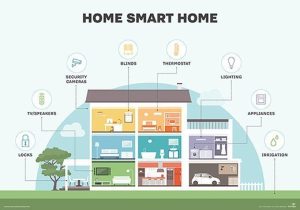
In conclusion, even though smart home appliances have the potential to save energy and provide convenience, several variables limit their usefulness and efficacy. Therefore, before investing in a “smart” home, homeowners should carefully consider the security risks, interoperability issues, reliance on the internet, cost, and complexity of these devices.

